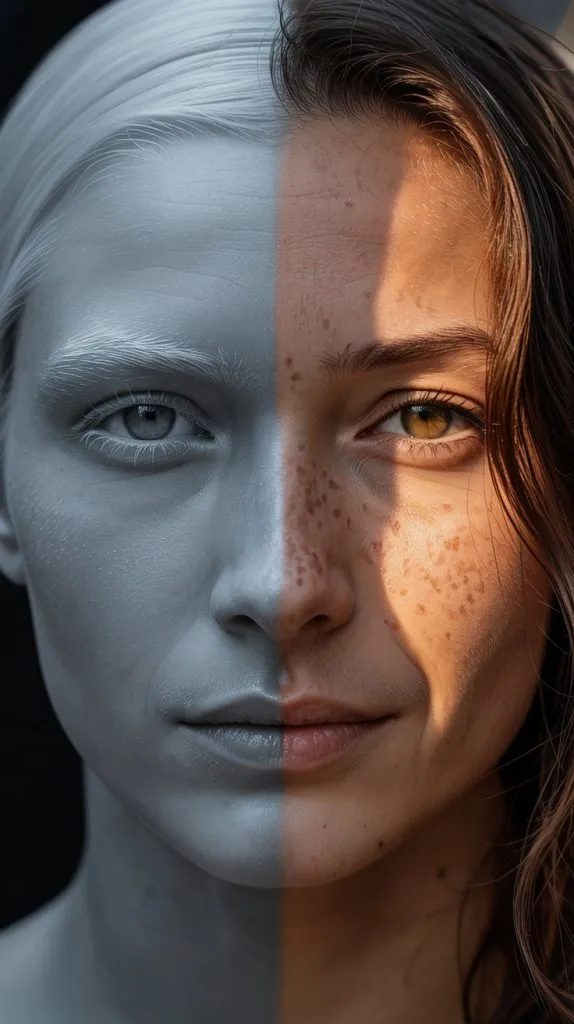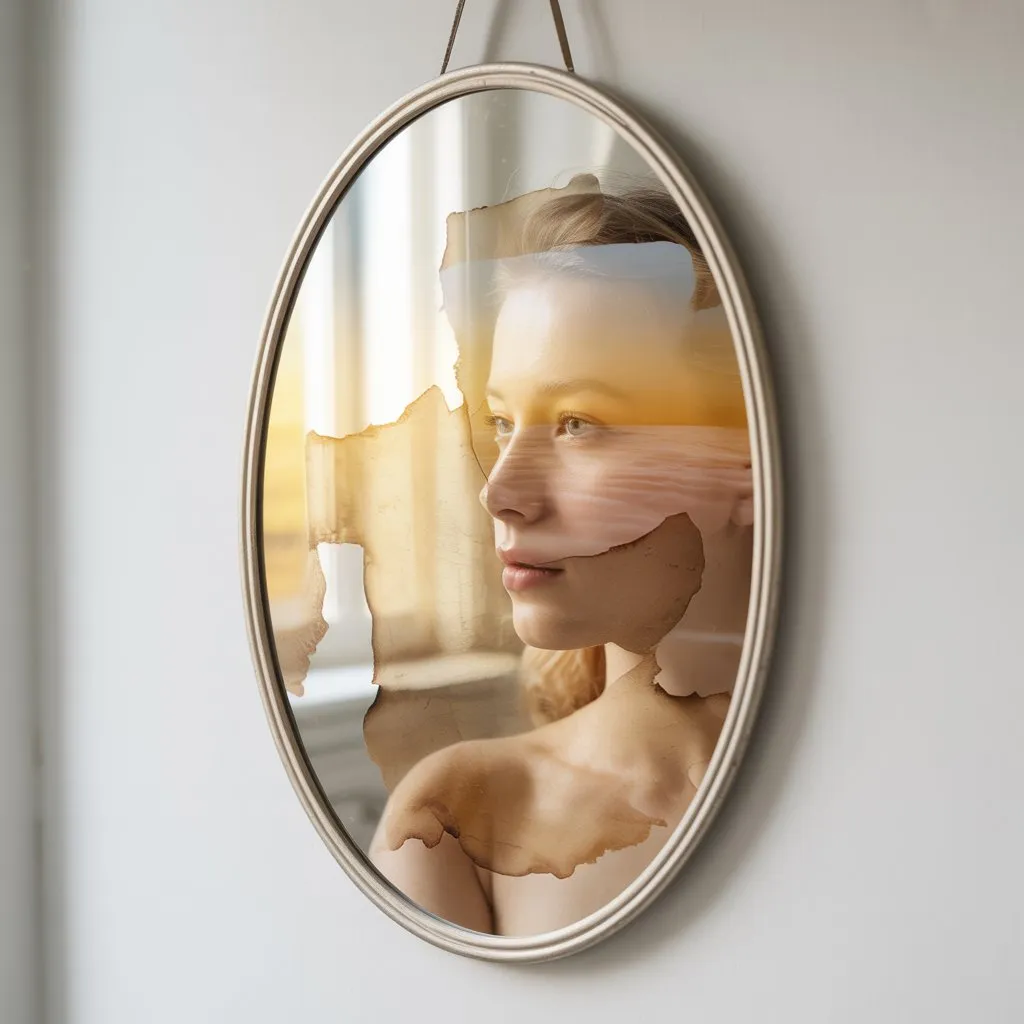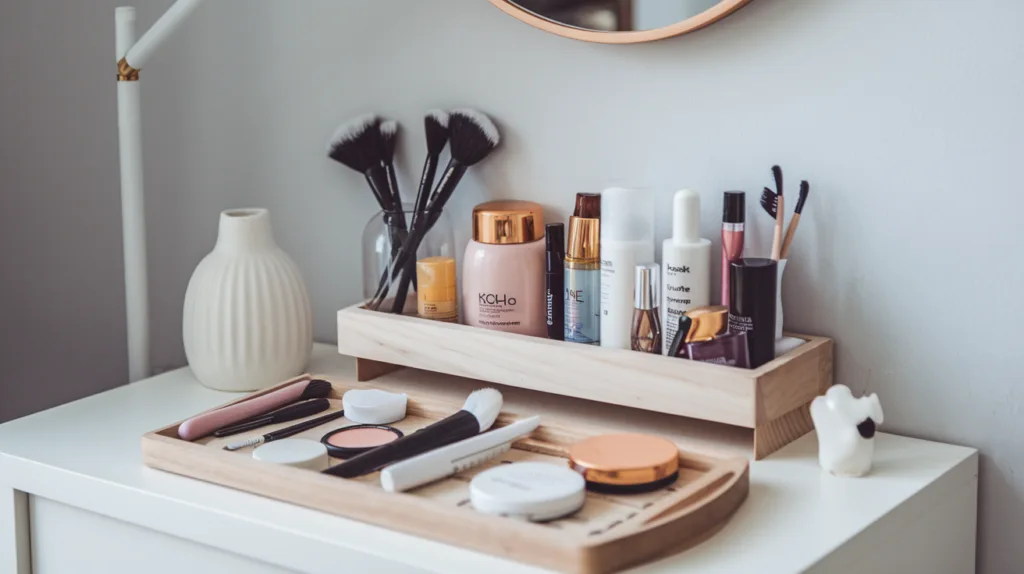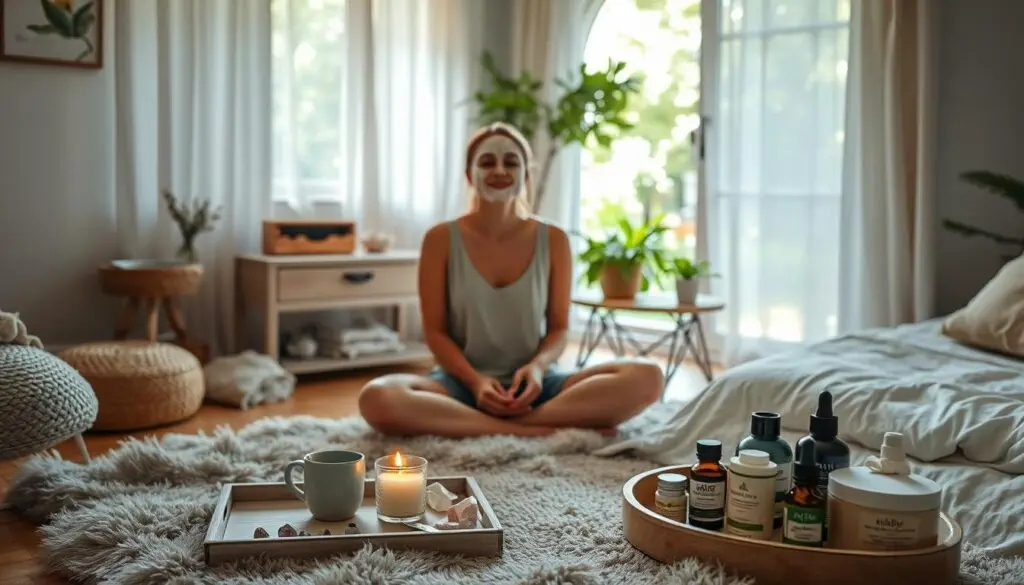The word “beauty” is one of the most powerful and subjective in our language. We use it to describe a sunset, a mathematical equation, a courageous act, and a human face. Yet, for all its common use, beauty remains elusive, difficult to pin down. We are culturally conditioned to associate the word primarily with one thing: physical appearance. This narrow definition is a disservice to the full, rich, and multidimensional nature of what it truly means to be beautiful.
When we are captivated by a person, what are we really responding to? Is it just the symmetry of their features or the clarity of their skin? Or is it the quickness of their wit, the genuine warmth in their smile, or the unshakable sense of peace they seem to carry?
True, lasting beauty is not a single attribute. It is a spectrum, a composite of different qualities that, when woven together, create a captivating whole. This article moves beyond the superficial to explore a more complete and fulfilling definition. We will examine the four distinct types of beauty: the physical, the intellectual, the emotional, and the spiritual. By understanding each facet, we can begin to appreciate it in others and, just as importantly, learn to recognize and cultivate it within ourselves.
Physical Beauty: The Tangible Form

Physical beauty is the most immediate and universally recognized of the four types. It is the beauty of form, of the body, of the senses. It is what we see at a glance—the symmetry of a face, the grace of a gesture, the vitality of a healthy body. It is the language our eyes speak before any words are exchanged.
The Immediate Language of Attraction
From an evolutionary perspective, our perception of physical beauty is deeply rooted in biology. It’s not as arbitrary as we might think. When we perceive features like facial symmetry, clear skin, and vibrant hair, our brains are, on a primal level, processing signals of health, fertility, and genetic fitness. This is the “first impression” mechanism, a rapid assessment tool honed over millennia to guide social bonding and mate selection. This biological underpinning is why certain proportions and features, like those described by the “golden ratio,” appear to have a cross-cultural appeal. This automatic, instinctual response is powerful, and it serves as the initial gateway for many of our social interactions.
Cultural Relativity and Shifting Standards
While biology provides a foundation, culture builds the house. What is considered physically beautiful is overwhelmingly dictated by the society and era in which we live. This is perhaps the most volatile and shifting of all the types of beauty. In the 17th century, the robust, pale, and full-figured women depicted by painters like Peter Paul Rubens were the epitome of beauty, signifying wealth and health. In the 1920s, the ideal shifted to an androgynous, athletic, and slender “flapper” silhouette. Today, social media platforms and global advertising project an altogether different, often digitally perfected, standard.
This cultural relativity proves that physical beauty is not a fixed, universal absolute. It is a social construct, a consensus that changes with time, geography, and values. Understanding this is liberating. It allows us to see current beauty standards not as an ultimate truth, but as a temporary trend.
Beyond Symmetry: The Beauty of Uniqueness
If beauty were only symmetry and biological signals, all attractive people would look the same. But they don’t. The most arresting physical beauty often lies in the deviation from the norm. It’s found in the “interesting” face, the one that doesn’t conform to the perfect mask but holds our attention precisely because of its distinctiveness. Think of a prominent nose that gives a face character, a gap in the teeth that makes a smile unforgettable, or laugh lines that speak of a life filled with joy.
This is the beauty of uniqueness. It’s also found in motion. A person’s physical beauty is not just a static image; it’s in their poise, their posture, the way they carry themselves. Confidence, grace, and animated energy are physical attributes that are profoundly attractive. A person who is comfortable in their own skin, who moves with purpose and ease, radiates a physical beauty that no cosmetic procedure can replicate.
Cultivating Physical Well-being
While we cannot change our bone structure, we have immense influence over our physical vitality. Cultivating this form of beauty is not about chasing an impossible ideal. It is an act of self-respect. It’s about stewardship of the body. This includes nourishing it with healthy food, moving it through exercise, and allowing it to rest and recover. It’s about the simple, grounding rituals of hygiene and grooming—not as a way to hide, but as a way to care for the physical self. When you treat your body with respect, it responds. It glows with health and vitality, and that energy is a powerful, undeniable form of physical beauty.
Intellectual Beauty: The Allure of the Mind

Intellectual beauty is the light behind the eyes. It is the allure of a sharp, curious, and engaged mind. While physical beauty can draw you in, intellectual beauty is what holds you captive in a conversation, what makes you lean in, eager to hear more. It’s the “spark” that turns a simple interaction into an electrifying one. This type of beauty is not about a person’s IQ score or their formal education; it’s about the way they think.
What is Intellectual Beauty?
At its core, intellectual beauty is a vibrancy of thought. It manifests in many forms:
- Curiosity: A person who is genuinely curious about the world, who asks thoughtful questions and listens to the answers, is magnetic. Their mind is not a closed loop but an open door, and that openness is attractive.
- Creativity: This is the ability to see the world differently, to connect disparate ideas in novel ways. It’s the artist, the inventor, the problem-solver. A creative mind builds new worlds and invites you into them.
- Wit: Wit is intelligence at play. It’s the ability to use language with precision and humor, to offer a clever observation that shifts the energy of a room. It demonstrates a mind that is both fast and flexible.
- Eloquence: This is the beauty of a well-expressed thought. A person who can articulate complex ideas with clarity and grace, or tell a compelling story, possesses a profound power to move and influence others.
The Seduction of a Passionate Mind
Have you ever watched someone talk about a subject they are deeply passionate about? Whether it’s astrophysics, 18th-century French poetry, or the mechanics of a motorcycle engine, a remarkable transformation occurs. Their eyes light up, their gestures become more animated, and their voice takes on a new energy. They become, in that moment, incandescently beautiful. This is the seduction of passion. An engaged mind is an engaging one. We are drawn to people who have a rich inner world, who have taken the time to explore ideas, and who find wonder in the universe. This passion is contagious; it inspires us and makes us feel more alive.
Wit, Humor, and Linguistic Grace
Intellectual beauty is often expressed through language. A well-timed joke, a clever turn of phrase, or a perfectly chosen metaphor can be as breathtaking as a perfect face. Humor, in particular, is a high form of intelligence. It requires the ability to understand a situation, see its absurdity, and reframe it in a way that brings joy and release to others. This linguistic grace builds connection. When someone’s words make you think, laugh, or see the world in a new light, you are experiencing their intellectual beauty. It’s a beauty that doesn’t just exist; it acts.
Cultivating Your Intellectual Radiance
This is perhaps the most democratic form of beauty, as it is available to anyone willing to do the work. Cultivating your intellectual beauty is a lifelong, joyful process. It’s not about “getting smarter” in an academic sense. It’s about staying engaged.
- Read Widely: Read outside your comfort zone. Read fiction to understand humanity, non-fiction to understand the world, and poetry to understand emotion.
- Listen Actively: Most people listen while waiting for their turn to talk. Practice listening to understand. Ask follow-up questions. Be genuinely interested in other people’s perspectives.
- Pursue a Hobby: Learn a new skill. Whether it’s coding, playing the guitar, or identifying birds, the process of learning rewires your brain and gives you new ways to interact with the world.
- Be Open to Being Wrong: True intellectual confidence isn’t about knowing all the answers. It’s about being comfortable not knowing and having the humility to change your mind. That flexibility is a hallmark of a beautiful mind.
Emotional Beauty: The Resonance of Character

If intellectual beauty is the mind, emotional beauty is the heart. This is the quality that people most often refer to when they speak of “inner beauty.” It is the warmth that radiates from a person, their capacity for connection, and the goodness of their character. While physical beauty can fade and intellectual beauty can sometimes be sharp or cold, emotional beauty only deepens with time. It is what makes a person a sanctuary for others. It is the beauty of how they make you feel.
The Warmth of Empathy and Compassion
At the center of emotional beauty is empathy—the ability to not just understand another person’s feelings, but to share in them. This is a rare and precious quality. An empathetic person makes you feel seen, heard, and validated. They create a safe space where you can be your authentic self without fear of judgment.
This empathy naturally blossoms into compassion, which is empathy in action. It’s the drive to help, to heal, to lessen the suffering of others. This can be as grand as dedicating one’s life to a cause or as simple as offering a listening ear to a friend in need, giving up a seat on the bus, or smiling at a stranger. These acts of kindness, especially when no one is watching, are the truest expression of emotional beauty.
Vulnerability as a Form of Strength
Our society often mistakes emotional beauty for weakness or softness. In reality, it requires immense strength. A key component of this beauty is vulnerability. It is the courage to be open, to admit when you are wrong, to ask for help, to share your fears and your joys. In a world that prizes invulnerability, an open heart is a radical act. This authenticity is magnetic. It shatters pretense and invites genuine connection. When someone is vulnerable with us, it gives us permission to be vulnerable in return, and this is the foundation of all deep and meaningful relationships. We are not drawn to perfect, impenetrable people; we are drawn to real people.
The Lasting Impact of Kindness
Think of the people you admire most in your life. When you reflect on why you love them, it’s rarely because of their physical appearance or their job title. It’s almost always because of their emotional qualities: their loyalty, their integrity, their patience, their generosity. Emotional beauty is the beauty of character. Physical beauty is a photograph, but emotional beauty is a story. It’s the person who remembers your birthday, the one who shows up when you’re moving, the one who champions your successes and comforts you in your failures. This is the beauty that builds legacies—not in stone or on canvas, but in the lives of others. It does not diminish; it compounds.
Nurturing Your Emotional Landscape
Developing emotional beauty is the work of a lifetime. It is the process of building character and purifying the heart.
- Practice Active Listening: As with intellectual beauty, this is key. But here, you listen not just for the facts, but for the feelings behind the words.
- Cultivate Self-Awareness: You cannot be empathetic with others if you are not in touch with your own emotions. Practice identifying what you are feeling and why. Journaling and mindfulness can be powerful tools.
- Practice Gratitude: Make a conscious effort to notice and appreciate the good in your life and in others. Expressing gratitude is a direct way to project positive, warm emotional energy.
- Commit to Small Acts of Kindness: Make it a daily practice. Hold the door, let someone merge in traffic, give a genuine compliment. These small acts build a habit of compassion that reshapes your character over time.
Spiritual Beauty: The Light of Purpose and Peace

Spiritual beauty is the most abstract and profound of the four types. It is the beauty of the human essence, the ineffable light of the soul. This has nothing to do with organized religion, though for many it can. It is the beauty of a person’s connection to something larger than themselves—be it the universe, nature, humanity, a divine power, or a deeply held set of values. It is a quiet, grounded, and powerful presence that radiates from a person who is at peace with themselves and their place in the world.
Defining the Ineffable: What is Spiritual Beauty?
Spiritual beauty is a sense of “centeredness.” It’s the calm in the eye of the storm. When you are around a person with this quality, you feel your own anxieties lessen. They have a weight and a substance to them that is not physical. This beauty is often perceived as:
- Inner Peace: A lack of inner turmoil. A person who is not constantly at war with themselves or the world.
- Authenticity: A deep and abiding sense of self. They know who they are, what they stand in for, and they live in alignment with those values. There is no gap between their words and their actions.
- Perspective: They seem to understand the bigger picture. They are not easily shaken by small inconveniences or minor dramas. They possess a “grace under pressure.”
The Aura of Authenticity and Purpose
A person with spiritual beauty lives with purpose. This doesn’t mean they are curing diseases or changing the world on a grand scale. It means their life has a “why” behind it. It could be raising a family, creating art, tending a garden, or simply living a life of principle. This purpose acts as an anchor, giving their life meaning and direction. This alignment between their inner values and their outer actions creates a powerful aura of authenticity. They are not trying to be someone; they simply are. This congruence is incredibly rare and deeply beautiful.
Resilience and Grace Under Pressure
Life is filled with challenges, loss, and pain. Spiritual beauty is not about avoiding this suffering. It is about how one moves through it. A person with spiritual beauty possesses a profound resilience. They may bend, but they do not break. They meet hardship with grace, not because they are unaffected, but because their inner foundation is strong. They draw strength from their connection to their purpose or faith. This ability to maintain their light, even in the midstt of darkness, is perhaps the most inspiring form of beauty there is. It gives hope and courage to everyone around them.
Finding Your Spiritual Center
Cultivating spiritual beauty is a deeply personal journey of going inward. It is about quieting the noise of the external world so you can hear the whisper of your own inner voice.
- Practice Stillness: This can be through meditation, prayer, or simply sitting in silence for a few minutes each day. The goal is to disconnect from the constant stream of external stimuli.
- Connect with Nature: Spending time in the natural world—walking in a forest, watching the ocean, or simply observing the sky—is a powerful way to reconnect with something larger than your own ego.
- Clarify Your Values: Take the time to identify what truly matters to you. What principles do you want to live by? Write them down.
- Live with Intention: Use your values as a compass. Make choices—from what you buy to how you spend your time—that align with those core principles. This is the path to building that unshakeable, authentic, and beautiful spiritual essence.
The Intersection: The Holistic Tapestry of True Beauty

We have explored these four types of beauty as separate categories, but in a living, breathing human being, they are not separate at all. They are constantly interacting, blending, and amplifying one. True, captivating, holistic beauty lies in the integration of all four.
Think about it:
- A kind act (Emotional Beauty) is made even more powerful when delivered with a well-chosen, insightful word (Intellectual Beauty).
- A person’s passion for their work (Intellectual Beauty) is expressed through their animated gestures and sparkling eyes (Physical Beauty).
- A person’s deep sense of calm (Spiritual Beauty) manifests as a patient and empathetic listening ear (Emotional Beauty).
- A person’s commitment to self-care (Physical Beauty) is often rooted in a deep sense of self-worth and purpose (Spiritual Beauty).
When all four types are present and aligned, the effect is staggering. This is charisma. This is presence. This is the person who walks into a room and changes its entire chemistry without saying a word. We are drawn to them, not because of one single quality, but because of the harmonious resonance of their entire being. They are not just a pretty face or a sharp mind; they are a complete, integrated, and beautiful human.
Redefining Your Own Standard of Beauty

The journey through the four facets of beauty—physical, intellectual, emotional, and spiritual—ultimately leads us back to ourselves. We live in a world that relentlessly pressures us to focus on only the first type, the physical, and to measure ourselves against an impossible and ever-changing standard.
This narrow focus is the source of endless insecurity and dissatisfaction.
The invitation here is to reject that standard. The invitation is to broaden your definition. When you look in the mirror, see beyond the physical reflection. Ask yourself:
- Did I nurture my body today? (Physical)
- Was I curious today? Did I learn something new? (Intellectual)
- Was I kind today? Did I make someone feel seen? (Emotional)
- Did I act in line with my values today? Did I find a moment of peace? (Spiritual)
True beauty is not something you have. It is something you cultivate. It is the daily practice of tending to your body, engaging your mind, opening your heart, and nurturing your spirit. When you begin to recognize and value all four types of beauty in yourself, you will, in turn, become a person who radiates a beauty that is deep, authentic, and truly unforgettable.




